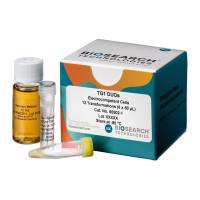Development of Attenuated Salmonella Strains that Express Heterologous Antigens
互联网
526
The ability of attenuated strains of Salmonella to induce humoral, secretory, and cellular immune responses following oral ingestion has made them attractive as a system for delivering foreign antigens to the mammalian immune system. DNA capable of driving the expression of heterologous antigens can be introduced into Salmonella vaccine strains using a variety of approaches. In general, there are two common methods of expressing a foreign antigen in salmonellae: from plasmid vectors or from the bacterial chromosome. Since there are many similarities in the cellular and molecular biology of Escherichia coli and Salmonella , most of the genetic manipulations required to construct expression cassettes can be carried out in E. coli . The resulting constructs can then be introduced into the vaccine strains using simple transformatron or other similar techniques. However, the laboratory manipulation of Salmonella strains should be undertaken using techniques that do not lead to the accumulation of genetic lesions, which may compromise the immunogenicity of Salmonella growing in vivo. With this in mind, we will describe appropriate techniques for manipulating Salmonella with the aim of constructing effective oral vaccines.









